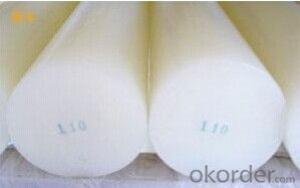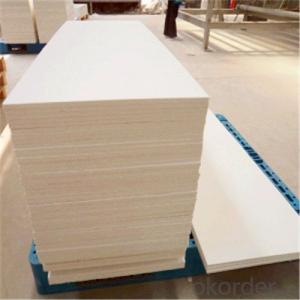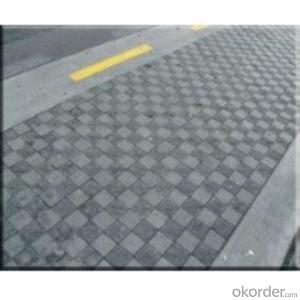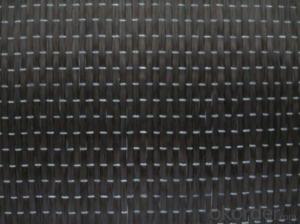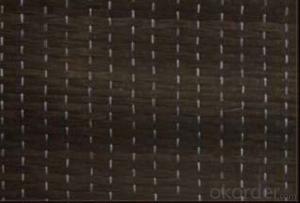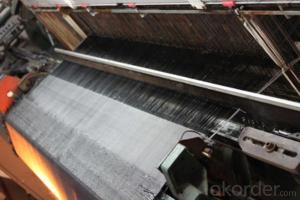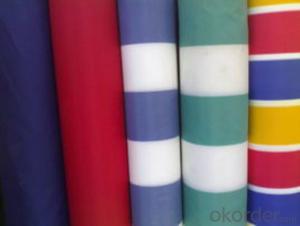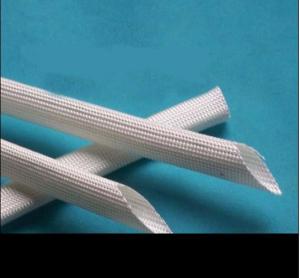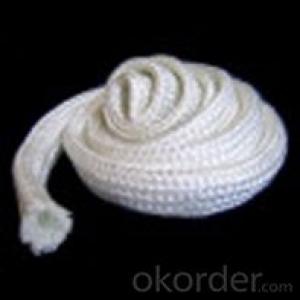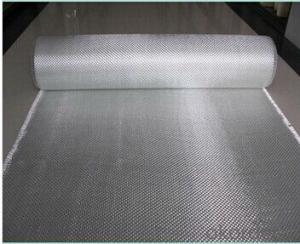Structure Textile Application Zirconia Ceramic Rod
- Loading Port:
- Qingdao
- Payment Terms:
- TT OR LC
- Min Order Qty:
- 500 m.t.
- Supply Capability:
- 2000 m.t./month
OKorder Service Pledge
OKorder Financial Service
You Might Also Like
Zirconia ceramic rods with precision slotted have the advantages of super hardness,high wear-resisting,good corrosion resistance ,high temperature tolerance,, high strength , precision process, high mechanical strength, good chemical stability, polishing surface and so on.
The following data as your reference .
Items | Unit | Data |
Density | g/cm3 | 6 |
Flexural Strength | MPa | 1000 |
Compressive Strength | MPa | 3000 |
Modulus of Elasticity | GPa | 200 |
Impact Resistance | MPa·m1/2 | 8 |
Weibull Modulus | m | 22 |
Vickers Hardness | HV0.5 | 1300 |
Thermal Conductivity | W/mk | <2 |
Highest Application Temperature | °C | 1000 |
Volume Resistivity at 20°C | Ω.cm20 | >1013 |
Dielertric strength | KV/mm | - |
Thermal expansion | X10-6/K | 10 |
Forming methods includes
1,drying pressing
2,isostatic pressing
3,hot pressing casting
The application of our product
1, ceramic shaft for aquatic animals equipment filter pump
2, Ceramic plunger for high pressure cleaner.
3,Wearlessness,resistant acid-base and high intensity ceramic assembly apply to petroleum ,chemical and chemical industry.
4,Wearlesness, corrosion resistance, thermostable parts apply to precision machine.
- Q:Can glass fiber textiles be used in wall coverings?
- Yes, glass fiber textiles can be used in wall coverings. Glass fiber textiles, also known as fiberglass textiles, are commonly used in various applications including wall coverings. They offer several advantages such as fire resistance, durability, and thermal insulation properties. Glass fiber textiles can be woven into different patterns and designs, making them versatile for use in wall coverings. They are also resistant to moisture and mold growth, which makes them suitable for areas with high humidity. Additionally, glass fiber textiles can provide acoustic insulation, reducing noise transmission through walls. Overall, glass fiber textiles are a viable option for wall coverings due to their functional and aesthetic properties.
- Q:Can glass fiber textiles be used in surgical implants?
- Surgical implants can indeed utilize glass fiber textiles. Glass fibers possess notable strength and biocompatibility, rendering them appropriate for diverse medical applications, such as surgical implants. They are commonly employed as reinforcement materials in composite implants, including bone plates, screws, and rods, to enhance both strength and stability. Glass fiber-reinforced composites have proven successful in orthopedic and dental implants, as well as in soft tissue repair. Moreover, these textiles serve as scaffolds in tissue engineering, facilitating cell growth and tissue regeneration. It is essential to recognize, however, that the biocompatibility of glass fiber textiles can vary depending on their composition and surface treatment. Consequently, thorough testing and evaluation are imperative to guarantee the safety and effectiveness of such textiles in surgical implants.
- Q:Are glass fiber textiles resistant to fading in sunlight?
- Yes, glass fiber textiles are generally resistant to fading in sunlight. Glass fibers are known for their durability and ability to withstand harsh environmental conditions, including prolonged exposure to sunlight. Unlike natural fibers such as cotton or silk, glass fibers do not degrade or fade easily when exposed to UV radiation from the sun. This makes glass fiber textiles a popular choice for outdoor applications such as awnings, umbrellas, and outdoor furniture, where resistance to fading is a desirable characteristic. Additionally, glass fibers can also be treated with special coatings or additives to enhance their UV resistance, further improving their resistance to fading in sunlight.
- Q:Can glass fiber textiles be used in the agriculture industry?
- Yes, glass fiber textiles can be used in the agriculture industry. Glass fiber textiles are versatile and have several beneficial properties that make them suitable for various agricultural applications. One application is in greenhouse construction. Glass fiber textiles can be used as a reinforcement material for greenhouse structures, providing strength and durability. The high tensile strength of glass fiber textiles makes them resistant to wind loads, ensuring the longevity and stability of the greenhouse structure. Moreover, glass fiber textiles are also resistant to corrosion and UV radiation, which are common challenges in agricultural environments. Glass fiber textiles can also be used as a substitute for traditional plastic mulch films. Plastic mulch films have been widely used in agriculture to control weeds, conserve moisture, and regulate soil temperature. However, they are non-biodegradable and can cause environmental pollution. Glass fiber textiles offer a sustainable alternative as they are biodegradable and can degrade naturally over time, reducing the environmental impact. Additionally, glass fiber textiles can be used in the production of agricultural shade cloth. Shade cloth is used to protect crops from excessive sunlight, preventing sunburn and promoting healthy plant growth. Glass fiber textiles can provide efficient shading while allowing sufficient airflow and light transmission, ensuring optimal growing conditions for crops. Furthermore, glass fiber textiles can be used in the manufacturing of agricultural nets and screens. These nets and screens are used to protect crops from pests, insects, and birds, reducing crop damage and increasing yield. The high strength and durability of glass fiber textiles make them effective barriers against these threats, providing a protective shield for crops. In summary, glass fiber textiles have numerous applications in the agriculture industry. Their strength, durability, resistance to environmental factors, and biodegradability make them suitable for greenhouse construction, mulching, shading, and crop protection. By utilizing glass fiber textiles, the agriculture industry can benefit from sustainable and efficient solutions for various agricultural challenges.
- Q:Can glass fiber textile be used in reinforcement materials?
- Glass fiber textiles, also known as fiberglass fabrics, can serve as reinforcement material. These textiles are created through the weaving or knitting of fine strands of glass fibers. They possess qualities such as high tensile strength, lightweight composition, and exceptional resistance to heat, chemicals, and electrical conductivity. Across various industries, glass fiber textiles are commonly employed for the purpose of reinforcing materials. In the construction sector, they reinforce structures by being incorporated into composite materials like fiberglass-reinforced plastic (FRP), thus enhancing strength and durability. Similarly, in the automotive industry, they are utilized in reinforcing car bodies, interiors, and engine components. Additionally, glass fiber textiles find applications in aerospace, marine, and sports sectors. In these fields, they reinforce components such as aircraft wings, boat hulls, and sporting equipment. They are also utilized in the manufacturing of electrical insulators, circuit boards, and high-performance textiles. The utilization of glass fiber textiles as reinforcement materials presents numerous advantages. Notably, they possess a lightweight nature, thereby reducing the overall weight of the final product. This attribute, coupled with their excellent strength-to-weight ratio, ensures high tensile strength while minimizing weight. Moreover, they exhibit resistance to corrosion and degradation, rendering them suitable for outdoor and harsh environment applications. In conclusion, due to their high strength, lightweight composition, and resistance to various environmental factors, glass fiber textiles can indeed be employed as reinforcement materials. Their versatility and broad range of applications establish them as a preferred choice in numerous industries.
- Q:Are glass fiber textiles resistant to moisture condensation?
- Yes, glass fiber textiles are resistant to moisture condensation.
- Q:What are the limitations of glass fiber textiles?
- Glass fiber textiles have several limitations that need to be considered before their usage. Firstly, glass fiber textiles are relatively brittle and can break easily under excessive stress or impact. This makes them less suitable for applications where flexibility and resistance to breakage are crucial. Secondly, glass fiber textiles have a relatively low resistance to heat. They can melt or deform when exposed to high temperatures, limiting their applications in environments with extreme heat conditions. Additionally, glass fiber textiles are not fire-resistant and may contribute to the spread of flames. Moreover, glass fiber textiles are susceptible to moisture absorption, which can lead to a reduction in their mechanical properties. This limits their use in outdoor applications or environments with high humidity levels, where moisture damage can compromise their integrity. Furthermore, glass fiber textiles can be challenging to work with due to their sharp and abrasive nature. They can cause skin irritation or respiratory issues when handled without proper protective equipment. This makes it necessary to take appropriate safety measures when working with glass fiber textiles. Lastly, glass fiber textiles are generally more expensive compared to other textile materials like cotton or polyester. This cost factor can be a limitation for applications where cost-effectiveness is crucial. Overall, while glass fiber textiles offer several advantages such as high strength and chemical resistance, their limitations in terms of brittleness, heat resistance, moisture absorption, handling challenges, and cost need to be carefully considered in order to make informed decisions about their usage.
- Q:Can glass fiber textiles be used in reinforcement of concrete?
- Yes, glass fiber textiles can be used as a reinforcement material in concrete. Glass fibers are strong, lightweight, and have high tensile strength, making them suitable for reinforcing concrete structures. They can enhance the overall durability and structural integrity of concrete by reducing cracking and improving its resistance to impacts and weathering.
- Q:How does glass fiber textile perform in terms of impact resistance?
- Glass fiber textile possesses exceptional impact resistance properties, renowned for its composition of resilient and pliable glass fibers. This unique composition grants it the ability to endure substantial impacts without succumbing to fracture or fragmentation. Consequently, glass fiber textile finds itself ideally suited for applications that necessitate unwavering impact resistance, such as protective clothing, bulletproof vests, and high-performance sports equipment. Additionally, glass fiber textile exhibits a remarkable resistance to deformation when confronted with forceful impacts, thereby ensuring its shape and structural integrity remain unscathed. As a result, it is evident that glass fiber textile surpasses expectations in terms of impact resistance, making it the preferred choice in countless industries where durability and safety reign supreme.
- Q:Can glass fiber textile be used in spacecraft construction?
- Yes, glass fiber textile can be used in spacecraft construction. It is commonly used as a reinforcement material in composite structures due to its high strength, low weight, and excellent thermal and electrical properties. Glass fiber textile is often used in spacecraft for applications such as insulation, structural components, and thermal protection systems.
1. Manufacturer Overview |
|
|---|---|
| Location | |
| Year Established | |
| Annual Output Value | |
| Main Markets | |
| Company Certifications | |
2. Manufacturer Certificates |
|
|---|---|
| a) Certification Name | |
| Range | |
| Reference | |
| Validity Period | |
3. Manufacturer Capability |
|
|---|---|
| a)Trade Capacity | |
| Nearest Port | |
| Export Percentage | |
| No.of Employees in Trade Department | |
| Language Spoken: | |
| b)Factory Information | |
| Factory Size: | |
| No. of Production Lines | |
| Contract Manufacturing | |
| Product Price Range | |
Send your message to us
Structure Textile Application Zirconia Ceramic Rod
- Loading Port:
- Qingdao
- Payment Terms:
- TT OR LC
- Min Order Qty:
- 500 m.t.
- Supply Capability:
- 2000 m.t./month
OKorder Service Pledge
OKorder Financial Service
Similar products
New products
Hot products
Hot Searches
